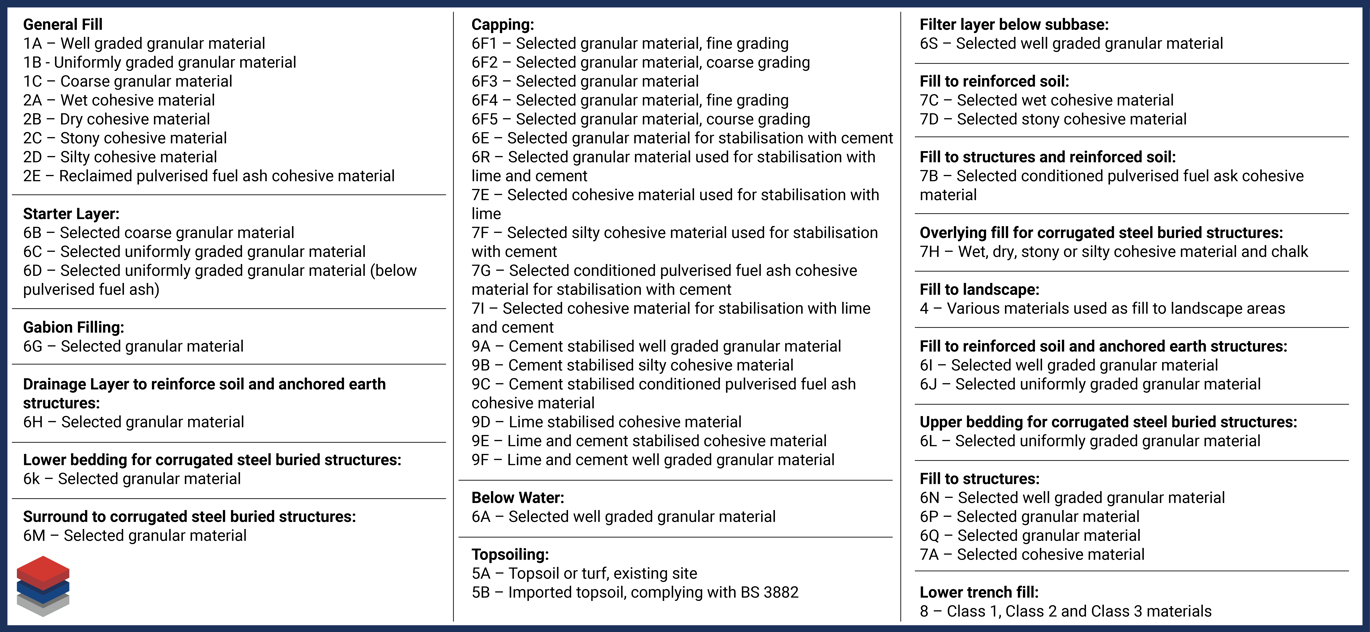Introduction to Series 600:
When it comes to ensuring the safety and reliability of our road networks, rigorous testing and adherence to standards are of paramount importance. In the realm of highway construction and maintenance, the Standards for Highway Works serve as a vital framework for ensuring the quality and durability of our transportation infrastructure. In this blog post, we’ll focus on a crucial aspect of these standards, namely Series 600 testing, and delve into its significance in highway engineering.
Understanding the Standards for Highway Works:
The Standards for Highway Works (SHW) is a comprehensive set of specifications and guidelines developed by the UK Highways Agency, now known as National Highways. These standards encompass various aspects of highway design, construction, and maintenance to guarantee consistent quality, safety, and sustainability across the road network.
What does the Series 600 cover as Acceptable Earthworks Materials:

Series 600 Testing Overview:
Within the Standards for Highway Works, Series 600 specifically addresses the testing procedures and requirements for earthworks materials. This series is crucial because it establishes the performance criteria that earthworks used in highway construction must meet to ensure their suitability, durability, and compliance with regulatory standards.
Types of Testing within Series 600:
Series 600 encompasses several tests, each targeting specific earthworks or aspects of highway construction. Some of the key tests include:
Laboratory Testing:
- Particle size distribution test
- Plasticity Index
- Moisture Condition Value (MCV)
- SMC & IDD of Chalk
- Undrained shear strength
- Optimum moisture content, rammer & vibration
- California bearing ratio (CBR) test
- Los Angeles
- Small & Large Shear Box
- Permeability
- Chemistry (Sulfates, Chlorides, pH, etc)
Site Testing:
- End Compaction – maximum dry density (Nuclear, Sand Replacement, Core Cutter)
- Moisture Condition Value (MCV)
- Degree of Pulverisation
- California Bearing Ratio (CBR)
- Hand Shear Vane
Significance of Series 600 Testing:
Series 600 testing plays a critical role in ensuring the quality and durability of highway earthwork materials. Here are some key reasons why it is significant:
Safety and Reliability: By subjecting materials to rigorous testing, Series 600 helps identify potential weaknesses or deficiencies, ensuring that only materials meeting the required standards are used. This helps enhance the safety and reliability of our road infrastructure.
Performance Assessment: The testing procedures within Series 600 assess the performance characteristics of earthwork materials under specific conditions. This enables engineers to select materials that are best suited for various highway applications, considering factors such as load-bearing capacity, resistance to wear and tear, and environmental conditions.
Quality Control: Series 600 testing serves as an essential quality control mechanism throughout the construction process. It helps identify any non-compliant materials or issues early on, allowing for timely corrective actions and preventing costly rework or project delays.
Regulatory Compliance: The testing requirements outlined in Series 600 ensure that materials used in highway construction meet the relevant regulatory standards. This promotes consistency and accountability across the industry, contributing to the overall quality of our road networks.
Conclusion:
The Standards for Highway Works Series 600 testing is a vital component of highway engineering, ensuring the quality, safety, and durability of earthwork materials used in road construction and maintenance. Through a comprehensive range of tests, this series assesses the performance characteristics of earthwork materials and guarantees their compliance with regulatory standards. By adhering to these testing procedures, we can continue to build and maintain robust road infrastructure that promotes safety and efficiency for all road users.
